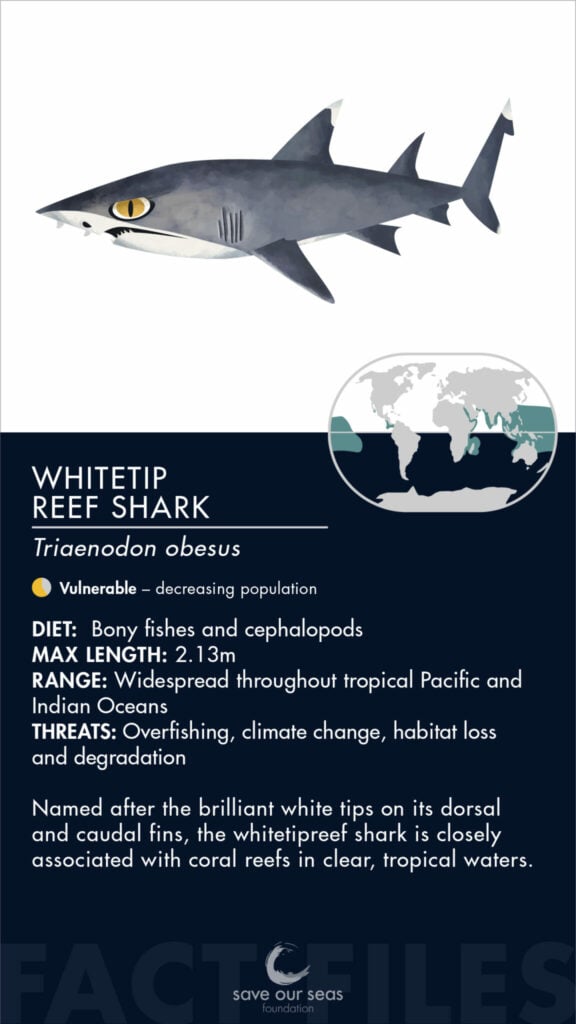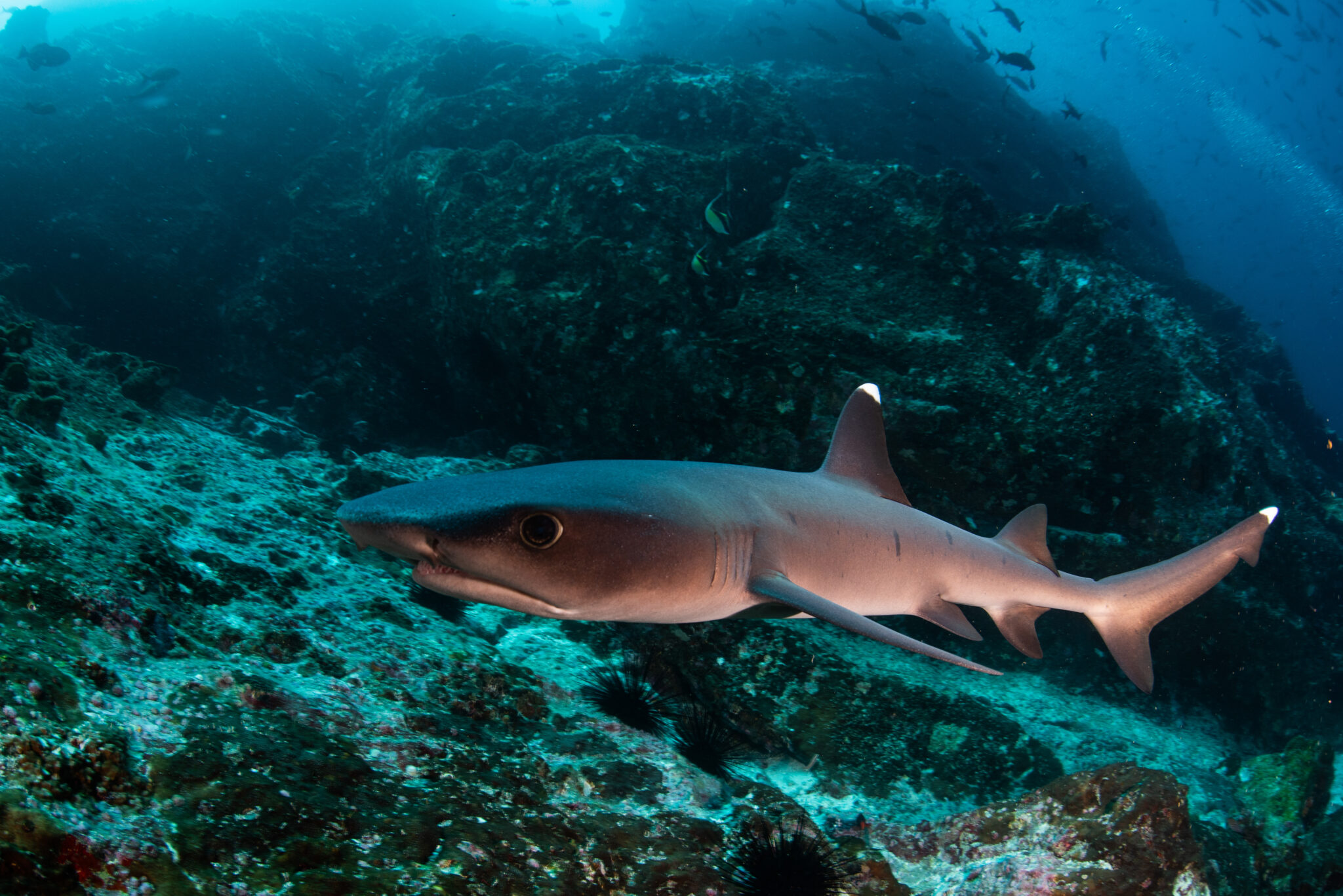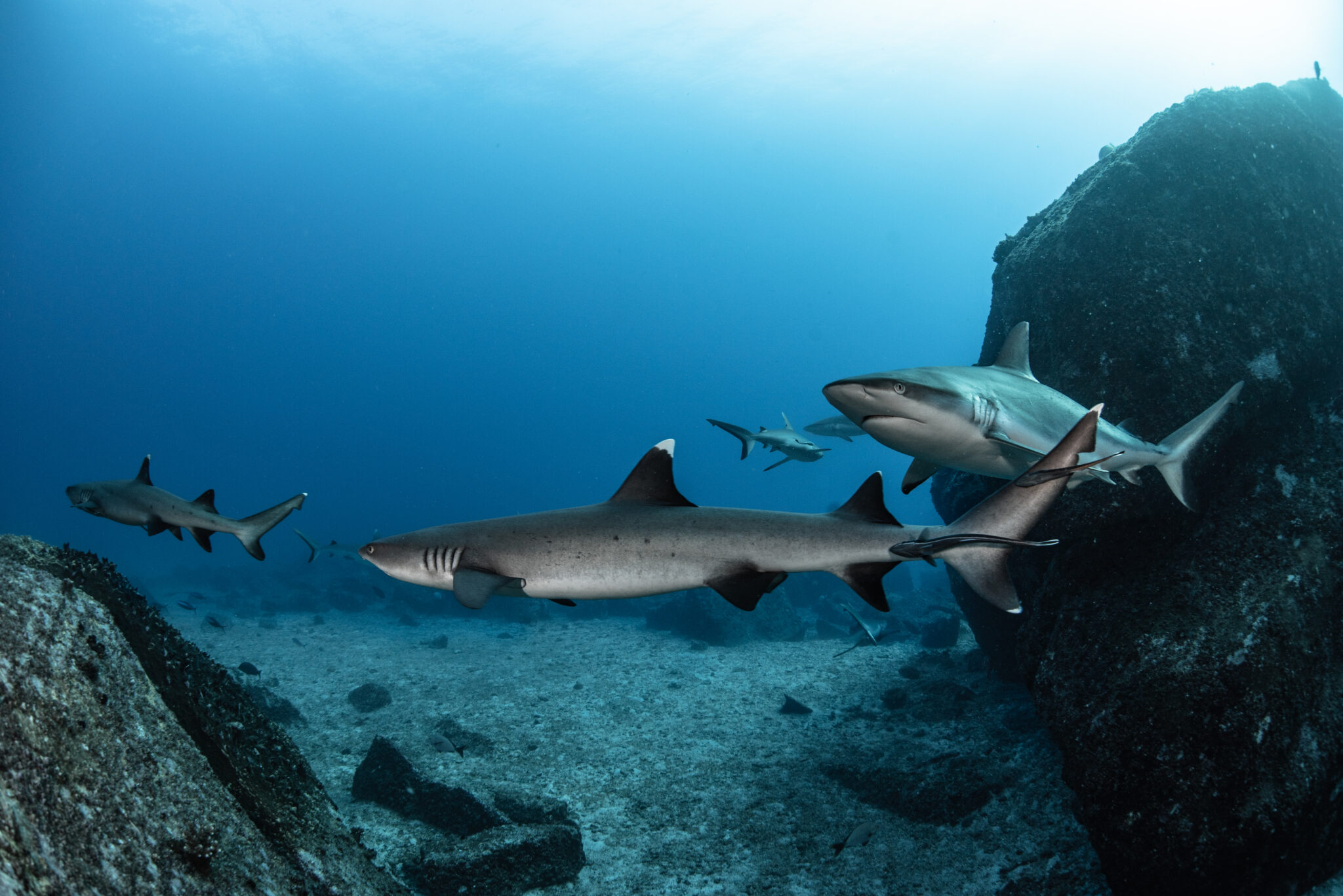Whitetip reef shark
Triaenodon obesus
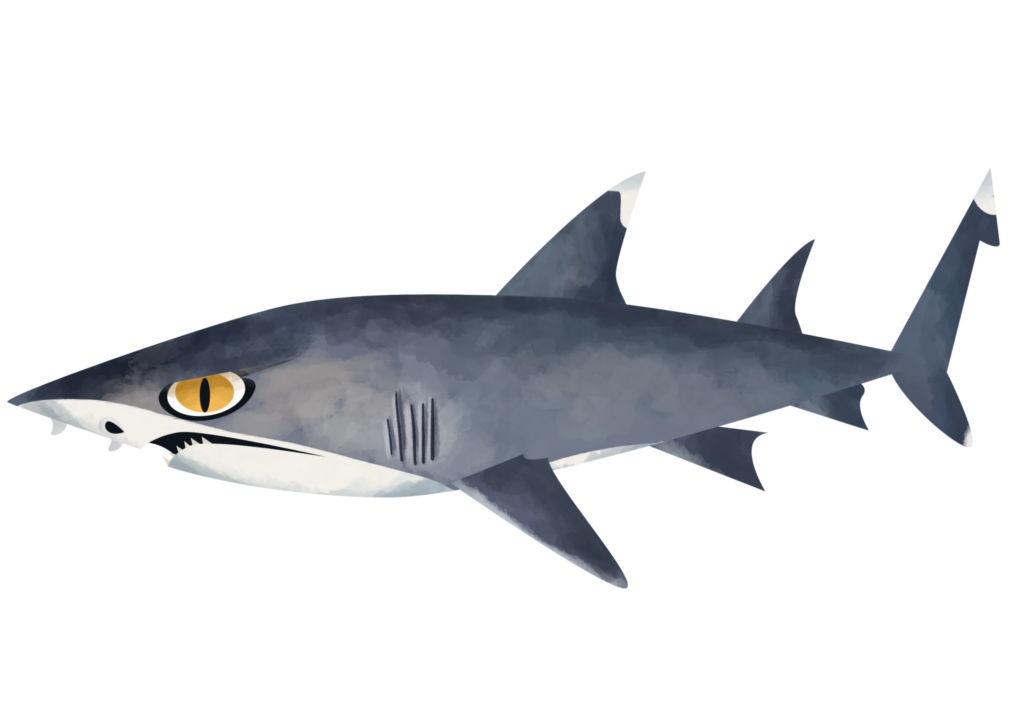

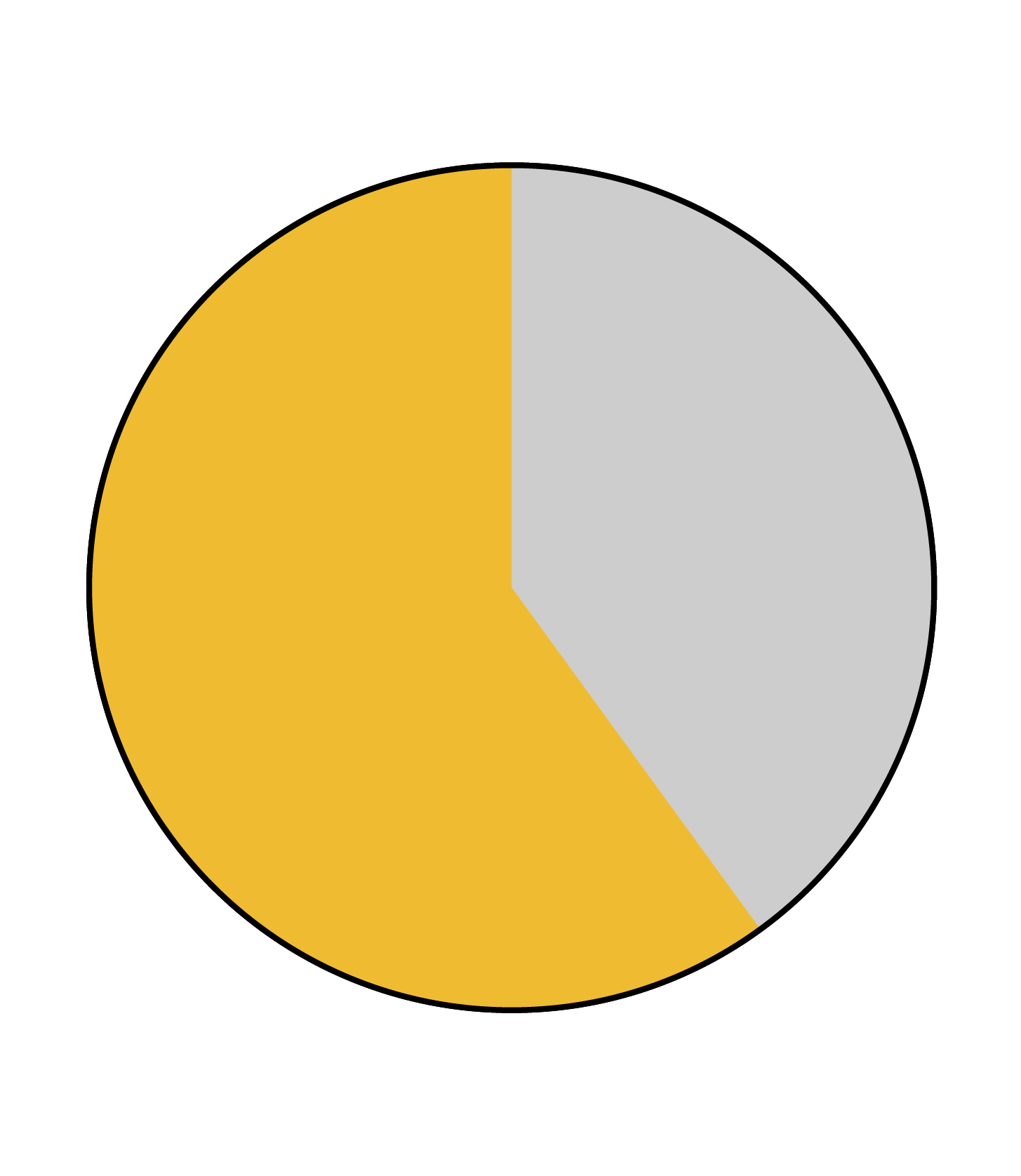
Whitetip reef sharks are found in tropical waters of the Pacific and Indian oceans, where they reside mainly in coral reefs. During the day, they rest on ledges or in caves, sometimes piled on top of one another. By night, they scour holes and crevices in the reef for prey, sometimes wriggling into tight spaces in pursuit of a meal.

IDENTIFICATION
Small, slender shark with very broad snout. Large, oval eyes. Grey-brown body with pale underside, and scattered darker spots on flanks. Distinctive, brilliant white tips on first dorsal and terminal caudal fin.
SPECIAL BEHAVIOUR
Whitetip reef sharks are nocturnal, and are most active at night. They are specialists in hunting prey hidden in the reef, using scent, sound and electroreception to detect fish and cephalopods tucked away in holes, crevices and caves. They are also social animals, and by day can be found snoozing in groups on ledges or in caves.
REPRODUCTION
Whitetip reef sharks are viviparous (give birth to live young) and can have 1 to 5 pups per litter.
HABITAT AND GEOGRAPHICAL RANGE
Whitetip reef sharks are associated with coral reefs in clear, tropical waters. They are found throughout the Indian and Pacific oceans, from West Africa to the eastern Pacific, with a depth range of 1 to 330 metres.

DIET DESCRIPTION
Whitetip reef sharks feed mainly on bony fishes and cephalopods found in their coral reef habitat.
THREATS
There are intensive industrial and small-scale fisheries in some parts of the whitetip’s range. It is retained for its meat and fins. Because of its reliance on coral reefs, the whitetip is also threatened by climate change, which affects the health and function of this key habitat and the whitetip’s prey species. Coral reefs are also threatened by destructive fishing and recreational practices.
RELATIONSHIP WITH HUMANS
Whitetip reef sharks are generally considered harmless to humans and are rarely aggressive. They are a popular species with divers, and have even been known to be hand-fed.
In some parts of their range, they are fished for their fins and meat.
CONSERVATION
In Queensland, Australia, there is a trip limit (which indicates the total amount of fish that may be taken and retained, possessed, or landed per vessel from a single fishing trip or cumulatively per unit of time) of one for whitetip reef sharks, for both commercial and recreational fishers. Some other countries within its range have banned targeted fishing for sharks, including Egypt, Sudan, the Cook Islands, Palau and French Polynesia. And, Marine Protected Areas (MPAs) designated for the whitetip’s coral reef habitat may offer the species some protection. However, the effectiveness of these measures depends on the level of enforcement.
FUN FACTS
Like other shark species found in Hawai’i, historically whitetip reef sharks were worshipped as ‘aumakua – guardian spirits or family deities. They were respected and cared for as protectors of the Hawaiian people.
The whitetip’s slim body allows it to wriggle into tight spaces in the reef in pursuit of prey. Sometimes they twist and turn so violently that they can break the coral, or even tear their own skin!
Whitetip reef sharks sometimes hunt in packs! This has been observed in the Cocos Islands in the Eastern Tropical Pacific, where a group of individuals were seen working together to flush out prey from the reef.
It is thought that during copulation, up to 11 males will follow a female until one bites her gill region and she accepts, allowing him to mate with her.
References
David A. Ebert. et al, 2021, Sharks of the World: A Complete Guide.
IUCN Red List of Threatened Species. 2020. Whitetip reef shark, Triaenodon obesus
Marine Bio. Whitetip reef shark.
Maui Ocean Center. Whitetip reef shark.
